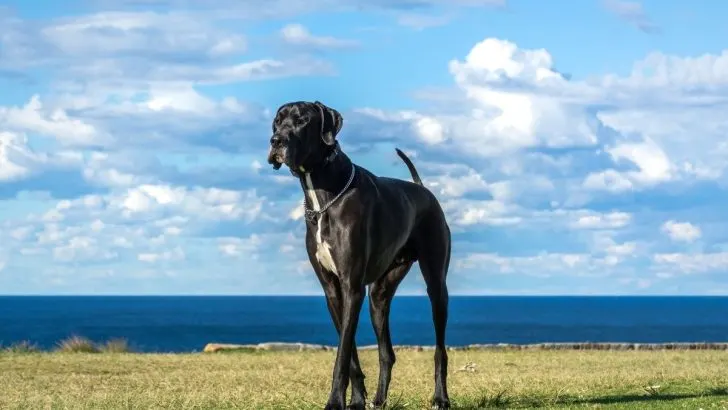Great Danes are known for being the gentle giants of the dog breed – but how big can they really get? A Great Dane growth chart can give you an idea!
Famous for its amazing temperament, floppy ears, and tall body, the Apollo of Dogs, as this pup is also known, is one of the largest breeds out there.
Many aspiring dog owners get Great Danes, but they do not truly realize just how huge these dogs are!
Understanding their size can be extremely helpful for future owners. It could also help to know whether your pup is at the right size for his age.
So, without further ado, here is everything you need to know about the Great Dane growth chart.
Great Dane Growth Chart
| Age | Weight | Height |
| 1 month | 6–8 pounds | 13–15 inches |
| 2 months | 20–30 pounds | 16–18 inches |
| 3 months | 30–45 pounds | 18–22 inches |
| 4 months | 45–65 pounds | 22–25 inches |
| 5 months | 65–85 pounds | 25–30 inches |
| 6 months | 75–100 pounds | 28–32 inches |
| 9 months | 80–120 pounds | 28–34 inches |
| 12 months | 90–140 pounds | 28–36 inches |
Keep in mind that the following numbers are just guidelines and that your own dog’s growth rate might vary.
Great Dane Growth Stages
When looking at the above height numbers, you might think there’s not much to think about. Your Great Dane puppy will grow at a certain speed, and that’s that.
However, your dog will go through several developmental stages throughout his lifetime. Sure, his height and weight at that specific time are important, but there’s more to it than just a dog’s size.
You might need to adjust your care and feeding routine depending on your dog’s growth stage. A Great Dane feeding chart might be of help if you need to understand proper nutrition.
Also, it’s important to understand that not all dogs will mature at an equal age. Something similar is the case with humans. Some mature faster than their peers; others are considered late bloomers.
Either way, here is what you can expect from your dog at a certain age and what you need to pay special attention to:
0-4 Weeks

During the first few months of their lives, Great Dane puppies are entirely dependent on their mothers. They’ll use her for protection and food, and they’ll never leave her size. Considering how they’ll stay blind and deaf until around three weeks of age, this isn’t surprising.
Their birth weight isn’t that important – unless you notice a runt of the litter, a single pup that is significantly smaller than the rest of his littermates.
These pups should usually be separated from their mothers and provided with additional care. Of course, always consult with your vet before doing anything.
1-3 Months
At around one month of age, puppies will open their eyes and become more curious about the world around them. They might even try to walk a bit out of their den, but they’ll never go too far.
However, they’ll still depend on their mother’s milk until they are around six weeks old, which is when you should start weaning them off and slowly introduce a specific puppy food to them.
Monitor your Great Danes’s growth, especially his weight, carefully during this transitional period, as it might fluctuate. Their tummies are not yet used to solid food, which might cause some upset and diarrhea.
When puppies turn two months old, it’s time for socialization. They start learning about the world at this age, and this is a crucial moment for their development.
A puppy will typically go to his new family by the time he is 8-10 weeks old, so most owners will become responsible for their pups at this age.
Just remember – this isn’t the right time to start puppy training. Your Great Dane is still too small, and by starting exercise too early you are risking developmental problems.
3-6 Months
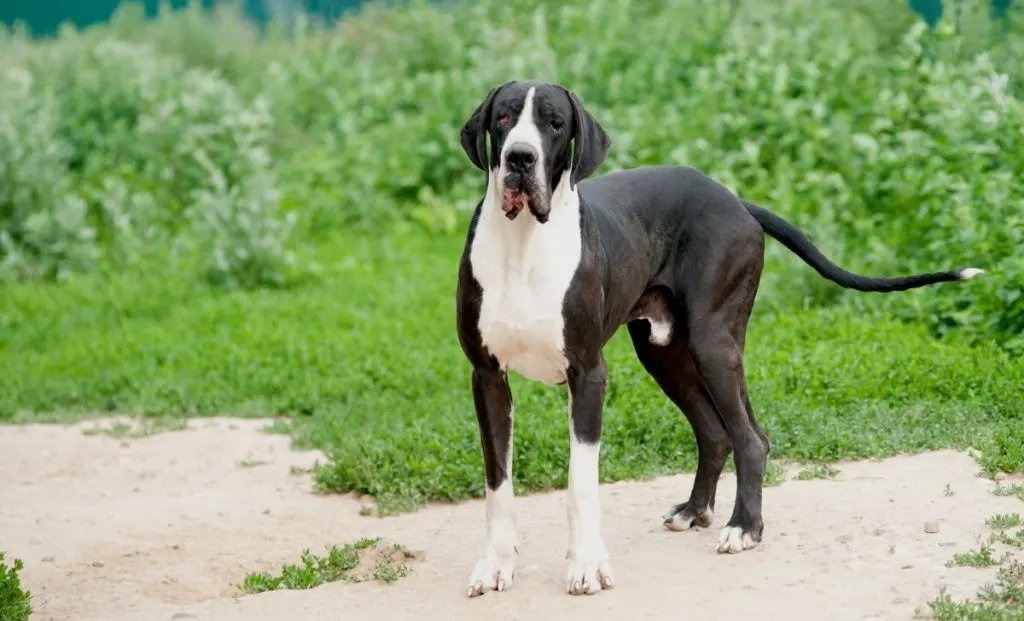
While all Great Danes grow at different rates, this is when you can expect a sudden growth spurt.
Also, once your pup is around four months old, it’s time to start training! Considering how he’ll probably be fully vaccinated before his 6th month of age, he’ll also be able to go for walks.
This is the time when your dog’s character will start to show, so you’ll see his individual personality. What a fun time!
6-12 Months
When your Great Dane is 6 months old, it’s time to slowly switch to adult dog food. This transition shouldn’t be sudden. Instead, mix a small portion of adult dog food in puppy dog food, and increase over time.
No need to rush – it’s perfectly fine to give your dog a few weeks to adjust.
Also, his feeding schedule should change, and you should slowly start feeding him larger meals fewer times a day.
Most Great Danes will reach sexual maturity before their first birthday, which means it’s time to consider spaying or neutering. Contact your veterinarian about this, as they will know the right age.
You’ll notice your dog’s growth slowing down, as well, and it might take longer for you to notice some major changes.
Finally, your Great Dane should be very close to his full size by the time he is one year old.
1-2 Years
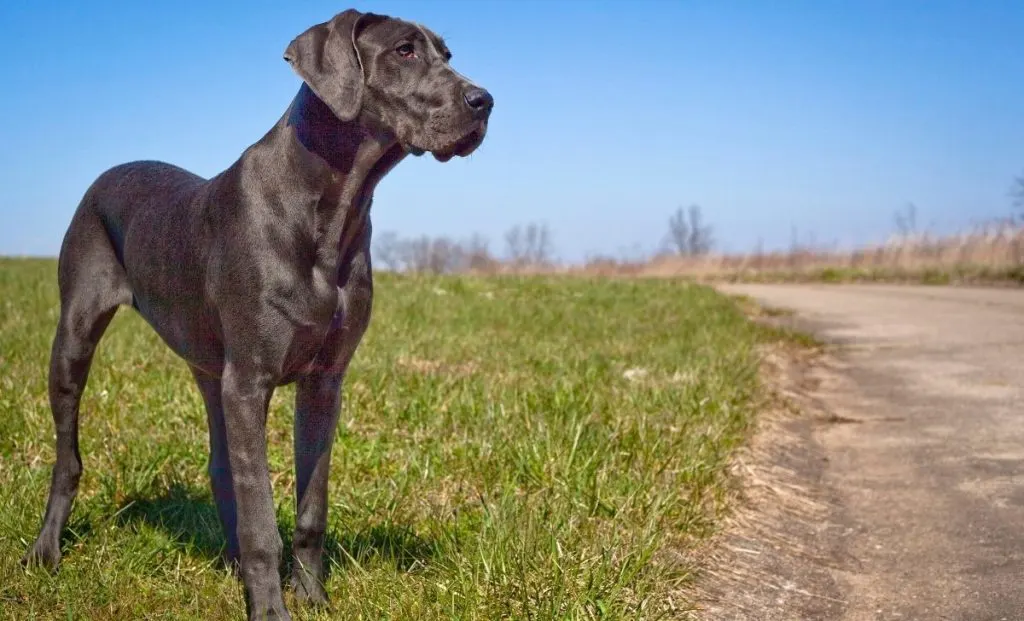
Your Great Dane might grow another inch or two during this period, but this will be very slow. However, his weight is likely to change a bit, as he’ll still be gaining muscle mass.
Your pup should be fully grown around the time of his second birthday, and you shouldn’t expect any more significant differences in size from him until he becomes old (and keep in mind that large dogs typically live shorter than small dogs ).
Also, now you can provide your pooch with several hours of exercise, as his body is finally strong enough to stay active for a prolonged period of time.
Congratulations! You have raised a Great Dane dog.
How Do I Tell How Big My Great Dane Will Be?
If you’ve bought a purebred Great Dane, you can expect your pup to grow according to the growth chart – although some variations are possible even on this occasion.
A few clear ways to predict this include:
- Look at their parent’s size. If possible, look at your dog’s pedigree to see the size of its ancestors. This will give you a general idea of what you can expect.
- Male Great Danes tend to be larger than female ones.
- Look at the dog’s paws. While this isn’t always the case, typically dog’s paws will grow first, and the puppy will later ‘grow into them.’
Of course, predictions are just that – predictions. They can be wrong, and your pup might end up taller or shorter than predicted for numerous reasons I’m about to discuss.
Factors That Affect Great Dane’s Growth Rate
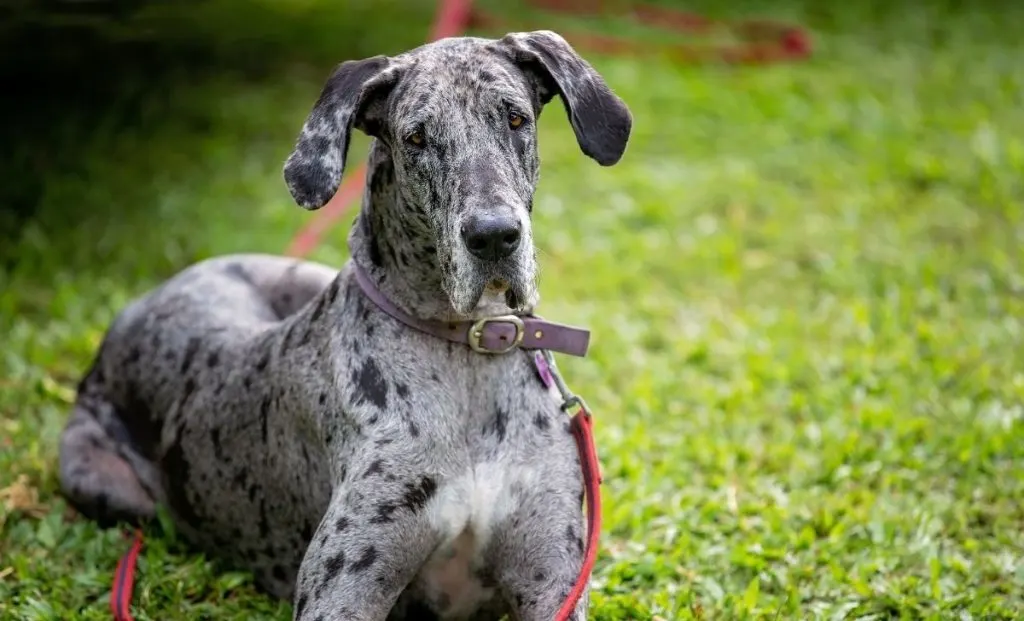
As mentioned before, all dogs are individuals that grow at their own speeds. Their developmental stages might occur a few weeks sooner or later than in other pups, especially when they are somewhat older.
In general, dogs grow the fastest when they are the youngest. Then, their growth rate will slowly slow down until they reach full size.
Still, there are several factors that can affect the growth rate, making your dog grow quicker or slower than their littermates.
Here’s what might affect your dog’s growth:
Genetics
First and foremost, your dog’s growth and full size is dependent on its genetics. You cannot buy a purebred Great Dane and expect it to stay small!
If possible, talk to the breeder about your dog’s parents and ancestors. Did they grow at the right speed, or were they growing slower than they were supposed to?
Of course, if you’ve adopted your Great Dane from the shelter, it won’t be possible to get this kind of information. However, if this did happen, chances are you’ve already got a full-grown dog.
Genes might also cause your dog to stay smaller or larger than he should have. Most of the time, this too can be predicted by looking at your dog’s parents.
Recessive genes pose an issue here, as you might end up with a dog who seems to be taller than both its parents. This is a rare occurrence, though, and it isn’t likely to happen.
Sadly, there’s nothing you can do to change these genetic factors. What you can do, on the other hand, is to contact your vet and ask them about genetic testing.
These DNA tests can tell you many things about your beloved pooch, including his size.
Nutrition
Nutrition can make a major difference in your dog’s growth speed. Your pup needs a healthy diet consisting of several small meals throughout the day to grow tall and strong.
Malnutrition is one of the main reasons why your dog might be smaller compared to his littermates. This can commonly be seen in rescue dogs that didn’t eat properly before they ended up in the shelter.
Opposite of that, your pup might grow a bit faster than the others if he eats too much. However, intentional overfeeding is never a good idea.
Sure, your Great Dane might grow a bit taller if you give him all the food he can eat, but he’ll typically just become thicker.
Considering how high obesity rates for dogs are, and that Great Danes are especially prone to it, it’s better not to risk it.
Not to mention how growing too fast due to improper feeding can result in some bone and joint health problems, such as hip dysplasia and patellar luxation.
Physical Activity
Physical activity is another essential factor that might affect your dog’s growth. It is essential to keep your puppy healthy and to make sure he grows the right way.
There are numerous benefits to providing your pup with the right amount of exercise. For example, you’ll lower the chances of him developing joint issues.
Physical activity can also help your pup develop properly and reach the right size at the right moment.
If your pup doesn’t get the right amount of activity, his muscles won’t develop properly, impacting his growth.
This is especially true for large dogs, as they need more strength and energy just to function properly.
Health
Certain health problems, especially in puppyhood, can greatly affect a dog’s size and growth rate.
This especially includes parasite infections, such as hookworms and tapeworms. These parasites will lead to malnutrition, as they’ll eat all the necessary nutrients before your dog’s body can process them.
Bone and joint conditions can also affect a dog’s height and weight, as they’ll result in improper development.
The best preventive measure is to give your puppies proper deworming medication as soon as they’re old enough and not to miss regular vet visits.
Spaying / Neutering
Did you know there are some indications that neutering your puppy earlier can result in a larger dog?
Once you neuter your dog, you stop the hormone spur they typically experience during maturing. As a result, this will stop the dog’s growth plate from closing, resulting in a taller dog.
In fact, many dog owners deliberately fix their dogs before sexual maturity, hoping to get the largest dog possible.
While it is possible this will give you just that, it also seems that early neutering is connected with joint health. As the growth plate takes longer to close, the joints also take longer to properly form, which can result in conditions such as arthritis.
It is advisable to always contact your vet before deciding to fix your dog. They will give you the proper information and tell you whether the time is right for this procedure.
Why Is My Great Dane So Small?
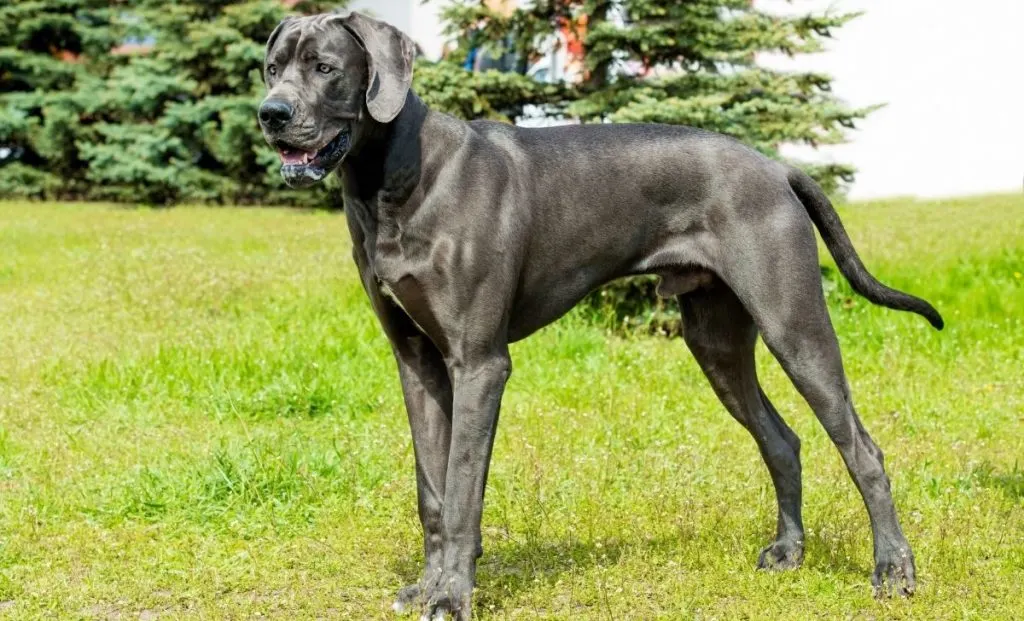
After reading all this, it’s probably somewhat easy to realize a few reasons why your Great Dane might still be fairly small – at least for its breed.
First off, maybe you’re not feeding him the right food. It doesn’t matter if the food has lots of proteins – it should also be formulated for large dog breeds. Only this will be a good indication that the nutritional value is proper for a dog of this size.
Some dog owners like to feed their Great Danes raw food. While this is a great option, make sure you have talked to your vet beforehand. It’s so easy to make a mistake and not provide your pup with enough calories otherwise, and this will halt his growth.
Maybe your pup is struggling with intestinal parasites, or maybe he is having some other health issue, although this isn’t likely, especially if you’ve gotten your pup from a reputable breeder.
Finally, maybe your pup is simply from a smaller bloodline. This can often happen if you haven’t had the chance to meet the parent doggos.
If your Great Dane is very young and seems healthy otherwise, give him some time. There is still time for him to grow.
And if you suspect something might be wrong with him, don’t hesitate to take him to the vet as quickly as possible. This will rule out any possible health conditions, or put him on the right treatment.
Tips To Help Your Great Dane Grow
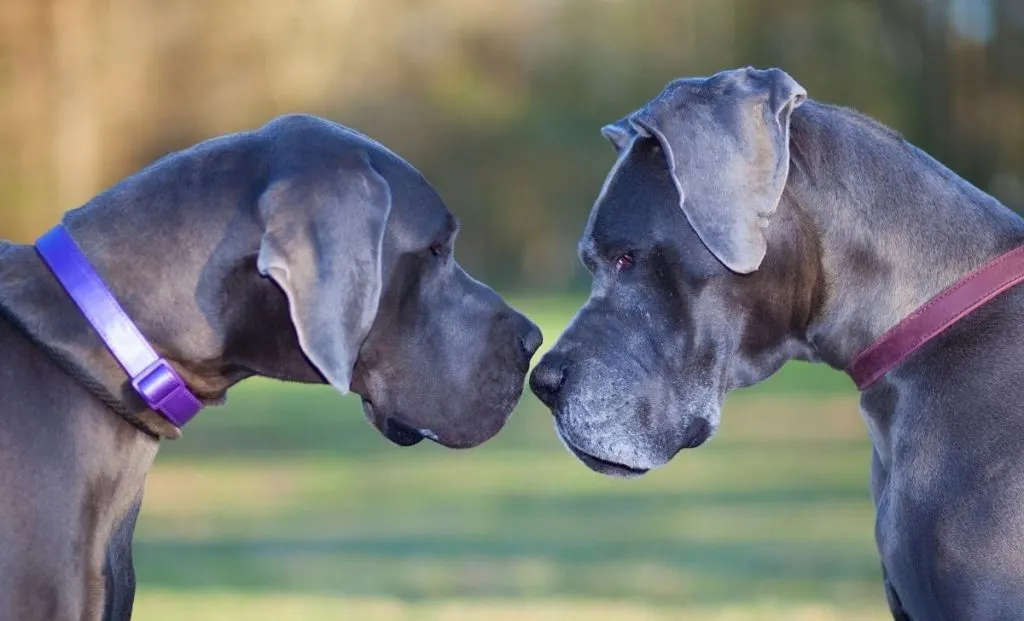
While it’s important to let your Great Dane grow at his own pace, there are still some tips and tricks you can use to help him grow.
Once again, it’s essential you’re in touch with a professional while your four-legged friend is growing – especially during his first year. They will also give you an insight about whether these tips are the right choice for your pup and his exact situation.
With this in mind, here are a few things you can do to help your Great Dane grow:
1. Proper Diet
As mentioned before, a proper diet is crucial to ensure your Great Dane grows tall and strong.
Large breed dogs have different dietary requirements from small ones. It’s not enough to simply give them lots of the same food you’d give to a smaller dog. Their bodies develop in a different way, and their diet needs to cater to that.
Great Danes are one of the tallest breeds in the world. To stay on par with their height and weight chart, they need lots of protein and good fat.
An ideal diet is commercial food made for large breeds mixed with some good supplements, such as omega-3 and omega-6 fatty acids and vitamins. This is a fairly cheap and effortless way to ensure your pooch gets all he needs.
2. Change The Feeding Schedule
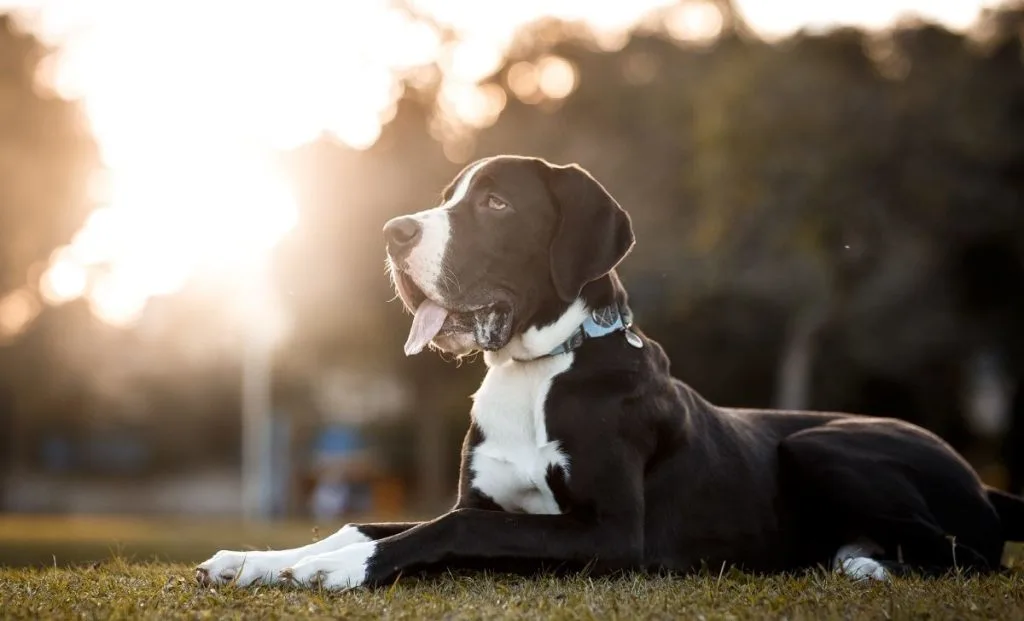
Sometimes, our dogs will eat properly but still stay too small or too skinny. This might mean that you’re giving him all the right nutrients but in an improper amount or at an improper time.
Most of the time, adult Great Danes are required to eat two meals per day. However, if you notice your dog’s weight is not improving, try feeding him on the same schedule you did when he was just a puppy.
In other words, try feeding your Great Dane three to four smaller meals a day.
This is a great weight-gain strategy, as it influences the dog’s metabolism and helps increase body mass – especially if you don’t go more than 6 hours between meals.
3. Weight Gain Snacks
Another solution is to give your dogs weight gain treats.
These treats are formulated to help dogs gain muscle mass quicker. They are like supplements bodybuilders use—only less impactful. They contain nutrients and minerals that help large dogs reach the recommended size.
They are also a good way to encourage your dog to eat more often, as he might be more eager to munch on some treats than to keep eating the same boring food you’ve been giving him.
Remember—you mustn’t go overboard. While these snacks are designed to target muscle mass, they can result in weight gain if your dog eats too many of them.
Most snacks have instructions on the package telling you how much of them are okay to feed your pup. Stick to his age group and always follow what the manufacturer has said.
4. More Exercise
As mentioned, one of the reasons your pup might be smaller is the lack of exercise. This can easily be fixed by making sure your doggie spends more time running around and being active.
Long walks are typically not enough for these big dogs. Take them on a long hike or a jogging session. Even just engaging in an extensive game of fetch or tug of war can do wonders for your Great Dane.
Not only that, but exercise will increase your dog’s appetite, and he’ll eat more – and, as a result, grow larger.
The proper amount of exercise is also good for your dog’s overall health, bringing your dog plenty of benefits.
Once again, just don’t go overboard. Balance is the key, and if suddenly you force your Dane to be too active all the time, he might hurt his joints.
5. Rule Out Health Problems
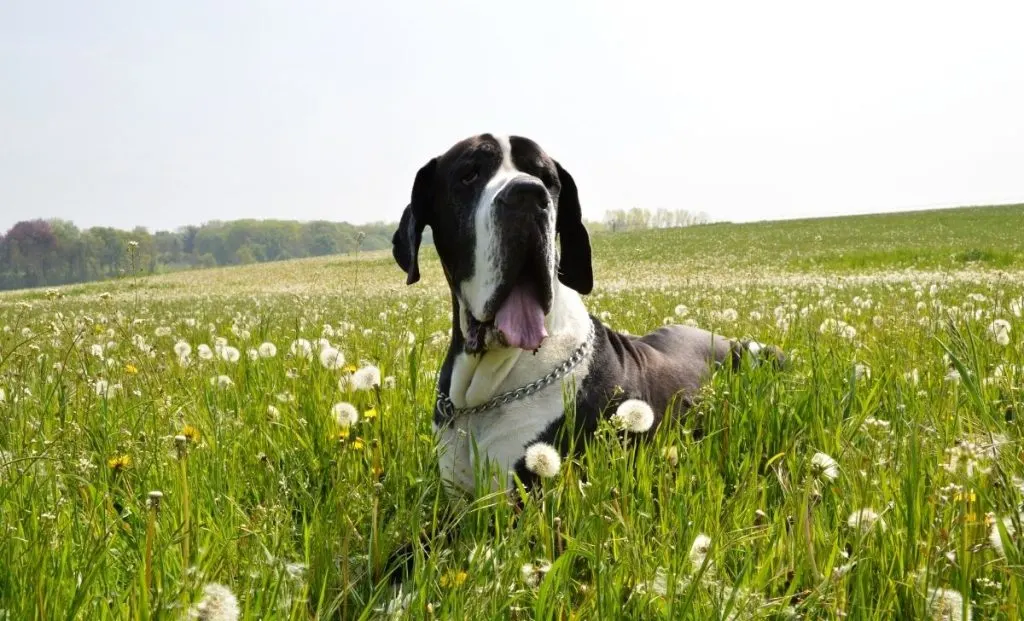
Regular checkups at the vet’s office are also important to rule out any potential health issues your Great Dane might be facing.
Just like most other massive dogs, Great Danes are prone to joint problems and disorders, including elbow and hip dysplasia, that can affect your dog’s bone development.
They might also get some intestinal parasites I’ve already talked about, especially if you’ve forgotten their deworming medicine.
Lastly, there are some genetic conditions, such as dwarfism, that might result in your dog staying small for the rest of his life.
Your dog should have annual vet visits as is. However, if you suspect him to be smaller for his age than he should have, it’s time to take him for an additional visit.
6. Write Down Everything
Finally, one of the best things you can do to help your dog, your vet, and yourself out, is to write down every bit of progress you notice in your pup.
Weigh him every week when he is tiny, then every month, and write that down. Write down when you’ve switched to adult dog food, and put every vet visit on paper.
Have you noticed something weird about your puppy, such as him smelling of Fritos or biting his paws more than usual? Write that down immediately.
By keeping everything written, you’ll be able to keep up with the Great Dane growth chart more easily. Also, you’ll have a report you can show to your vet once you go to his office.
And remember: If you notice your dog isn’t growing as fast as you think he should have, don’t panic, but also don’t leave anything to chance. Your vet should always be on your speed dial, and you should contact them with any concerns you might have.
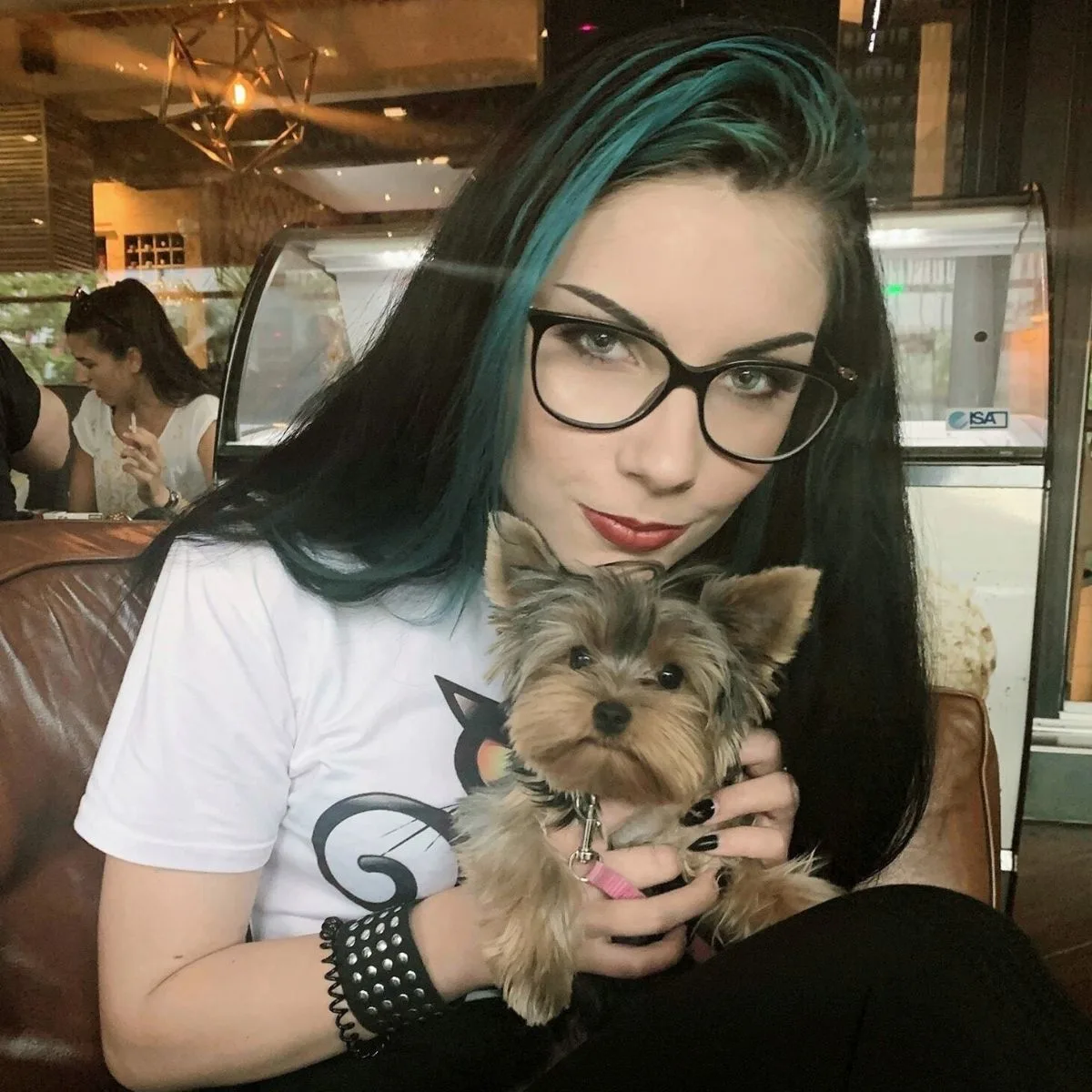
Vanja’s passion for writing started at an early age, which is why she pursued Journalism as her college degree. She can research any topic and find all the information before you bat an eye, which is a great thing for her job but a terrible one for her husband.
Even as a young child, she fell in love with everything fluffy – but dogs have a special place in her heart due to her childhood companion, a Corgie named Archie.
Motivated by her experiences and driven by a desire to give back to her four-legged companions, she spends her free time volunteering at a local dog shelter.
